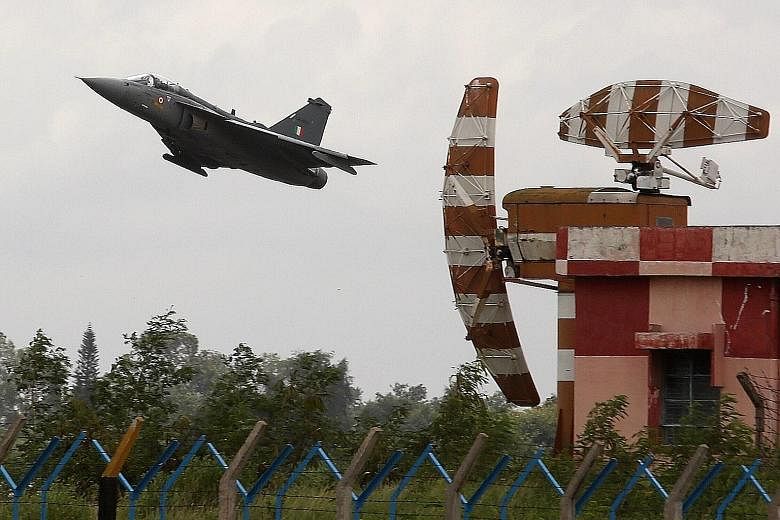Two supersonic fighter jets made in India were inducted into the Indian Air Force yesterday, in a major milestone for the country as it tries to cut down its dependence on foreign weaponry while modernising its force to take on security threats.
The two Light Combat Aircaft called Tejas - which means radiance in Sanskrit - took to the skies in Bangalore after a short multi- faith religious ceremony.
Defence Minister Manohar Parrikar tweeted that the induction of the two jets - the first of 120 that the air force plans to acquire over the next 13 years - was a "moment of national pride".
A more powerful version of the jet is under development. The single-engine fighter will be deployed to border areas by next year.
"This illustrates our skills and strengths to enhance indigenous defence manufacturing," Prime Minister Narendra Modi said in a statement. Since coming to power in 2014, he has spoken of converting India, the biggest buyer of arms, into a defence manufacturer.
Last month, Mr Modi relaxed the rules to allow foreign direct investment of up to 100 per cent in the defence sector as part of efforts to attract foreign investment and modernise the country's military.
The Indian Air Force, for instance, has a sanctioned strength of 42 squadrons but has only around 34, which include 10 squadrons filled with ageing jets such as the MiG-21, which are on their way out.
Still, the Tejas project also typifies the problems India has faced in domestic defence production.
The project was first approved in the early 1980s, and the planes were supposed to have been inducted into the air force in 1994.
Challenges included the lack of experience in building a combat aircraft from scratch, the multiple number of agencies involved and delays in getting approvals.
-
TEJAS LIGHT COMBAT AIRCRAFT
-
• Single-engine, single-seat fighter
• Can carry air-to-air and air-to-surface weapons
• Glass cockpit with several displays that show real-time information
• Has a limited reach of more than 400km, which means it will be used mostly for close air-to-ground operations
• India says it is the smallest and lightest supersonic fighter aircraft of its class
• Safety record: No accident in 3,000 hours of flying
• Use of composites helps lower its radar signature, so it is harder to detect early
• Developed by the Aeronautical Development Agency and Hindustan Aeronautics Limited
More than 110 billion rupees (S$2.2 billion) has been spent on developing the Tejas, while another 140 billion rupees is estimated to have been spent on coming up with advanced versions.
The last Indian-made fighter was developed in the 1960s and phased out in 1990.
Professor Bharat Karnad of the New Delhi-based Centre for Policy Research said the country's focus should be on building, and not importing, fighter jets. India and France are in the last stages of negotiating a deal for 36 Rafale jets.
"We don't need to import aircraft... we need to get on with making advanced and medium combat aircraft," Prof Karnad said.

